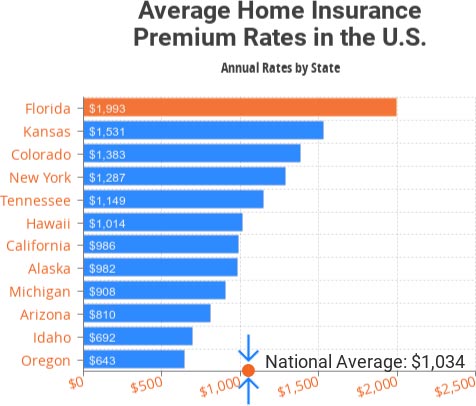Table of ContentsThe 10-Minute Rule for Why Life Insurance Is ImportantIndicators on What Is Voluntary Life Insurance You Should KnowGet This Report about What Does Term Life Insurance MeanSome Of What Does Life Insurance CoverSee This Report about What Does Term Life Insurance Mean
So, now that you understand what they want, how can you lower your premium? While you can't do much about your age, you can quit smoking, take up regular exercise and try slim down if you need to, to bring those the premiums down. Monetary experts like Dave Ramsey suggest setting your survivor benefit at 1012 times your yearly income.
Let's take a look at Sarah from our example earlier and how a death advantage of 1012 times her income could truly assist her household: Sarah's wage is $40,000, and her policy survivor benefit is $400,000 ($ 40,000 times 10). If Sarah passed away, her household might invest the $400,000 in a mutual fund that makes a 10% return.
The interest that Sarah's household might make each year would cover Sarah's income. And the initial amount invested could stay there indefinitely as they use the interest to assist get through life without Sarah. Most importantly, this provides comfort and monetary security for Sarah's loved ones during a really challenging time.
Let the mutual funds deal with the investment part. Prepared to start? The relied on experts at Zander Insurance can provide you a quick and free quote on a term life policy in a couple of minutes. Do not put it off another daykeep your momentum going and get going now!. how much does life insurance cost.
Some Known Facts About Which Parts Of A Life Insurance Policy Are Guaranteed To Be True?.
Life insurance coverage is an agreement between an insurance company and an insurance policy holder in which the insurance provider warranties payment of a death benefit to called beneficiaries when the insured dies. The insurance coverage company assures a death benefit in exchange for premiums paid by the policyholder. Life insurance coverage is a legally binding agreement.

For a life insurance policy to remain in force, the insurance policy holder should pay a single premium up front or pay regular premiums in time. When the insured passes away, the policy's named recipients will receive the policy's face worth, or death advantage. Term life insurance policies end after a particular variety of years.
A life insurance policy is only as excellent as the financial strength of the company that provides it. State guaranty funds might pay claims if the issuer can't. Life insurance coverage supplies financial support to surviving dependents or other beneficiaries after the death of an insured. Here are some examples of individuals who may need life insurance coverage: If a moms and dad passes away, the loss of his or her earnings or caregiving skills might create a financial difficulty.
For kids who require lifelong care and will never be self-dependent, life insurance coverage can make certain their needs will be satisfied after their parents pass away. The death benefit can be utilized to money a unique needs trust that a fiduciary will handle for the adult kid's benefit. Married or not, if the death of one adult would imply that the other might no longer manage loan payments, upkeep, and taxes on the residential or commercial property, life insurance may be a great idea.
Some Known Incorrect Statements About Which Is Better Term Or Whole Life Insurance
Lots of adult children compromise by requiring time off work to care for a senior parent who needs assistance. This aid may also consist of direct financial support. Life insurance can assist compensate the adult child's expenses when the parent dies. Young adults without dependents rarely require life insurance coverage, but if a moms and dad will be on the hook for a kid's debt after his or her death, the child might wish to bring enough life insurance coverage to pay off that debt.
A 20-something adult may purchase a policy even without having dependents if there is an expectation to have them in the future. Life insurance can supply funds to cover the taxes and keep the full worth of the estate intact.' https://local.hometownsource.com/places/view/159183/wesley_financial_group_llc.html A little life insurance policy can supply funds to honor a loved one's death.
Instead of selecting between a pension payout that offers a spousal benefit and one that doesn't, pensioners can pick to accept their complete pension and utilize a few of the money to purchase life insurance to benefit their spouse - how much does life insurance cost. This method is called pension maximization. A life insurance policy can has two main components - a survivor benefit and a premium.

The death benefit or stated value is the amount of money the insurance business guarantees to the beneficiaries identified in the policy when the insured dies. The insured may be a moms and dad, and the beneficiaries might be their kids, for instance. The insured will select the desired survivor benefit quantity based upon the beneficiaries' approximated future requirements.
What Type Of Life Insurance Should I Get Things To Know Before You Get This
Premiums are the cash the insurance policy holder spends for insurance. The insurance provider needs to pay the survivor benefit when the insured dies if the policyholder pays the premiums as required, and premiums are identified in part by how likely it is that the insurance provider will need to pay the policy's death advantage based on the insured's life span.
Part of the premium likewise goes toward the insurance provider's operating costs. Premiums are higher on policies with bigger death advantages, people who are greater risk, and irreversible policies that build up cash value. The cash value of irreversible life insurance serves 2 purposes. It is a savings account that the insurance policy holder can use during the life of the guaranteed; the money builds up on a tax-deferred basis.
For example, the insurance policy holder may take out a loan against the policy's cash value and need to pay interest on the loan principal. The policyholder can also use the money value to pay premiums https://www.inhersight.com/companies/best/reviews/responsiveness?_n=112289636 or purchase additional insurance coverage. The money value is a living advantage that stays with the insurance company when the insured passes away.
The insurance policy holder and the guaranteed are generally the same individual, however in some cases they might be different. For instance, a company may purchase crucial individual insurance on a crucial staff member such as a CEO, or an insured might sell his/her own policy to a 3rd party for money in a life settlement.
Not known Facts About How Much Is Life Insurance Per Month
Term life insurance coverage lasts a particular number of years, then ends. You pick the term when you take out the policy. Common terms are 10, 20, or 30 years. The premiums are the very same every year. The premiums are lower when you're younger and increase as you grow older. This is also called "yearly eco-friendly term." This remains in force for the insured's whole life unless the policyholder stops paying the premiums or surrenders the policy.
In this case the insurance policy holder pays the whole premium up front instead of making regular monthly, quarterly, or annual payments.Whole life insurance is a kind of permanent life insurance coverage that collects cash worth. A type of irreversible life insurance with a money worth component that makes interest, universal life insurance has premiums that are equivalent to call life insurance coverage. This is a type of universal life insurance coverage that does not build cash worth and normally has lower premiums than whole life. With variable universal life insurance coverage, the insurance policy holder is permitted to invest the policy's money worth. This is a kind of universal life insurance Visit this website that lets the policyholder make a repaired or equity-indexed rate of return on the cash value part.